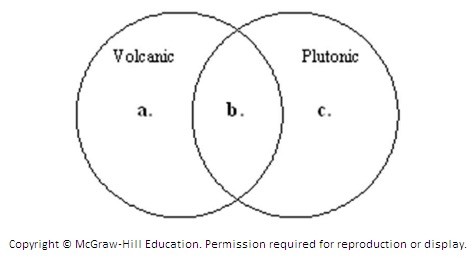Discuss the six different tectonic settings in which volcanism can occur, and why magma is produced at each location
What will be an ideal response?
Answer: Volcanoes can be triggered by the subduction that occurs at convergent boundaries, either (1) at an oceanic lithosphere—oceanic lithosphere subduction zone, or (2) a subduction zone where oceanic lithosphere is subducting under continental lithosphere. Magma is produced when subducted slabs give off water, which lowers the melting temperature of the neighboring/overlying mantle. Volcanoes may also occur at divergent boundaries, either at (3) continental rifts, or (4) oceanic ridges. Decompression melting of the underlying mantle is typically the cause here. Lastly, rising mantle plumes and hot spots can cause volcanism, far from any plate boundary. This intraplate volcanism may occur either beneath (5) oceanic lithosphere, e.g. Hawaii, or (6) continental lithosphere, e.g. Yellowstone. Addition of heat from Earth's deep interior and the decompression of rising warm rock (due to convection) both play a role here.
You might also like to view...
Classify the following as element, compound, or mixture, and justify your classifications: table salt, stainless steel, table sugar, aluminum, ice.
A. mixture; compound; mixture; element; compound B. mixture; element; compound; element; element C. compound; mixture; compound; element; compound D. compound; element; compound; element; compound
In the following statements, what are the correct characteristics of Shield Volcanos?
a. They are broad and slightly domed-shaped b. They cover large areas c. Formed after mild eruptions of small volumes of mafic lava d. All of the above e. Both a and b
Use the Venn diagram shown below to answer this question. Which section of the diagram forms at the surface?
Which section of the diagram forms at the surface?
A. Volcanic B. Both volcanic and plutonic C. Plutonic
A(n) ________ facies is associated with a high-pressure, low-temperature environment
A) zeolite B) granulite C) blueschist D) eclogite